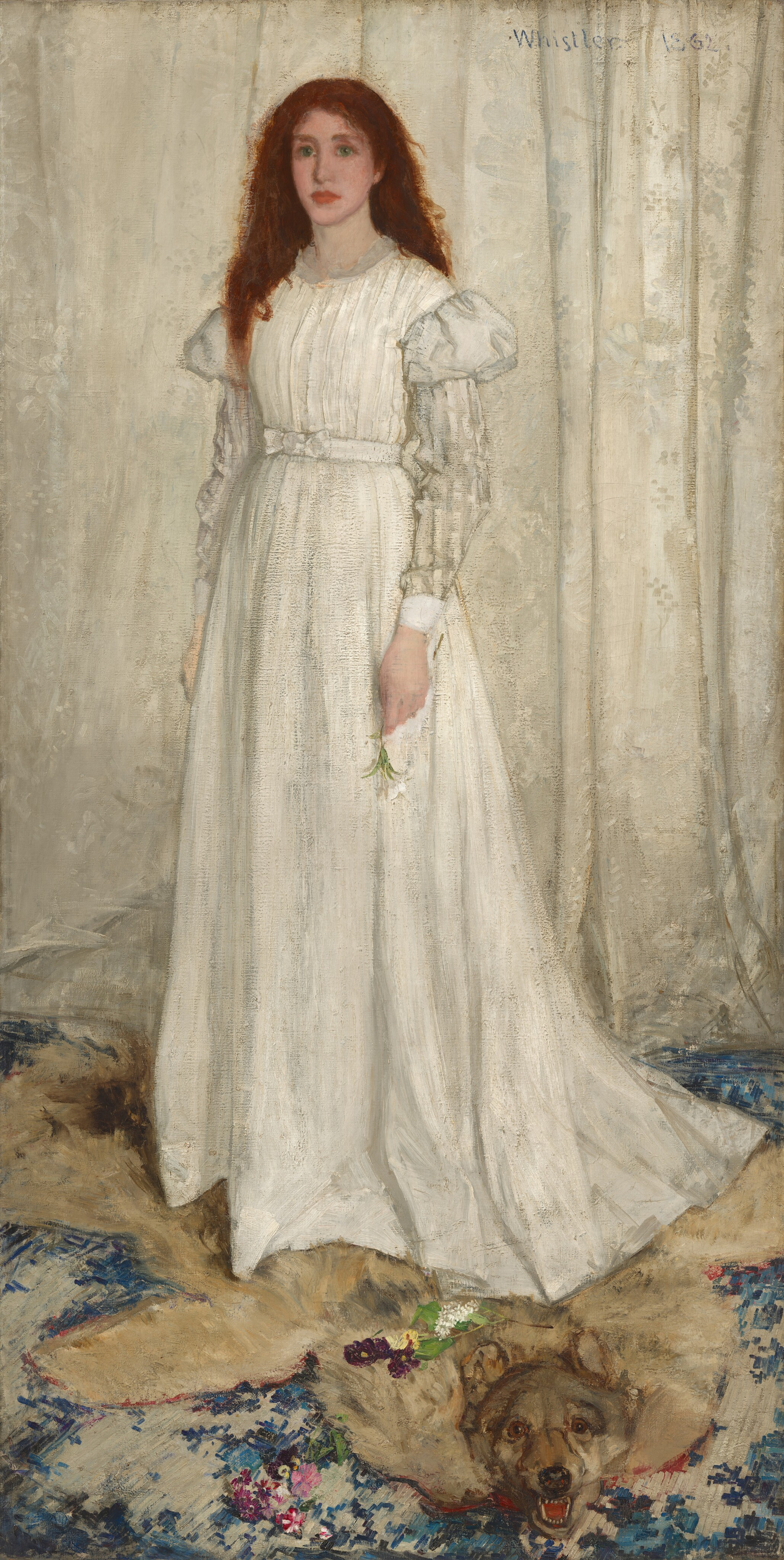
From Colour to Music: James McNeill Whistler
Colour Materiality
1861
In 1861, James McNeill Whistler embarked on the first of what would become his series of White Girls, which consisted of The White Girl, The Little White Girl, and The Two Little White Girls. These titles were not consistent, however – in fact, the last was only known by its more famous name, Symphony in White, No. 3. Despite the retrospective retitling of both earlier works to Symphony in White, No. 1 and Symphony in White, No. 2, the third work was Whistler’s first publicly exhibited colour-music title. This prompted a significant change in his oeuvre. Previously, he had applied more generic titles; this explorational use of a musical movement allied with a colour – as you have a Symphony No. 7 in A Major, so you have a symphony in white – set the tone for future musical titles. It was also Whistler’s first step into a more calculated approach towards his colour palette.
Whereas the average Victorian viewer would be more inclined to ‘read’ a painting by its title, Whistler wanted to draw the attention to other matters. Not only was he interested in experimenting with white on white, but he also wanted to fuse the art of music more definitively to his own visual art. Musical movements, such as the symphony, are instrumental; lacking a narrative, they operate on a strong formal level – music for music’s sake, if you will. Whistler, in his own search for art for art’s sake, was inspired by music’s ability to be formal, immersive and, by extension, abstract.
Trying to paint without a narrative, when Whistler exhibited The White Girl at the Berners Street Gallery, London, in 1862, he commented that the painting only represents a girl dressed in white and nothing else. Some critics read it as an illustration of Wilkie Collins’s famous The Woman in White (1859) due to the titular similarity. Others complained that, besides white, there were plenty of other pigments visible so it could not truly be a symphony in white. This public reception of the work shaped Whistler’s thinking around the malleability of titles, specifically in relation to colours. The White Girl was, first of all, an experiment in colour to avoid representing a narrative. Painting white on white is difficult; the only variation will be one of tonality. It operates on a stronger formal level than other colours and, hence, an experiment of white-on-white is an experiment of the palette. Indeed, the contemporary critic P.G. Hamerton perceived Whistler’s White Girl to be a technical exercise, in which the artist was wrestling with relieving white upon white as there is no narrative subject.
Drawing away from narrative in pursuit of a type of formalism, Whistler’s experiments with white display a high degree of subtlety. The lead white we see is, in fact, balanced with crimson red lake, yellow, red ochre, ultramarine and a bluish black. Despite this variation, the overall effect is one of a limited palette with minimal tonal contrast, and so emphasising the abstract patterns and forms of the composition.
Bibliography
-
Hamerton, Philip Gilbert, “The Artistic Spirit”, Fortnightly Review 1 (June 15, 1865): 341.
-
Letter from James McNeill Whistler, printed in “Our Weekly Gossip”, The Athenaeum n°1810 (July 5, 1862): 23.
-
“Our Weekly Gossip”, The Athenaeum n°1812 (July 19, 1862): 86.